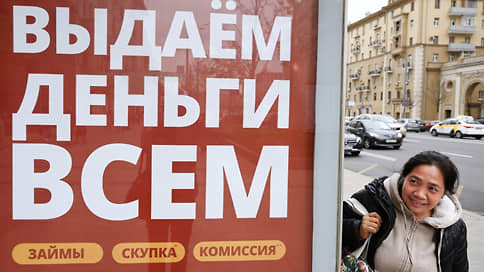The microfinance market is preparing to redeem bonds worth more than 6 billion rubles
[ad_1]

The microfinance market is preparing to redeem bonds worth more than 6 billion rubles. Some companies will have to repay up to 100% of the issued volume in the coming year. The problem of access to funding and its diversification continues to be acute for the industry. Companies are likely to change the funding structure in favor of faster and more reliable instruments or to refuse borrowed funds.
In the next 12 months, microfinance companies (MFCs) will have to redeem bonds in the amount of 6.2 billion rubles. Most of all in absolute terms, repayments will be at the “Center for Financial Support” (CFS) -1.5 billion rubles, “Moneymena” -1.2 billion rubles. and “Zimer” – 1.1 billion. Some issuers, in the absence of refinancing, will pay off all bond issues in the coming year. Such data are provided in the study of the Ivolga Capital Management Company, which Kommersant got acquainted with.
The local repayment peak is due to relatively favorable market conditions that were observed in 2021-2022, followed by tightening of the monetary policy and narrowing of the “window of opportunity” for new issues, recalls Ivan Uklein, Director of Banking Ratings at Expert RA. Therefore, there is no threat of massive problems with refinancing: most IFCs have a significant reserve of their own liquid assets and unclaimed credit lines in banks, he is sure.
Since the beginning of the year, securities have been placed in the amount of 2.1 billion rubles. and 14.3 thousand yuan. Since the beginning of the year, there has been only one debut on the primary market – IFC Summit.
Most companies in one way or another combine direct loans from individuals, bank lending and bonds. According to the results of the past six months, bonds accounted for from 17% to 90% of IFC funding, follows from Ivolga Capital data. Bank loans still account for the smallest share in the funding structure, but since the beginning of the year, the figure has grown from 42% in 2022 to almost 60% now.
However, the share of bonds in the industry’s funding structure will continue to grow, Ivolga Capital chief analyst Mark Savichenko believes. “For companies that want to refinance their bond debt, the best route now is a new issue. Issuers have the opportunity to either accumulate liquidity for repayment, or refinance,” he explains. “In theory, direct loans or bank loans can be considered, but in the current conditions it is more efficient to use market instruments.” “Moreover, the majority of IFCs are reducing the share of individual loans in the funding structure,” adds Anton Khrapykin, Investment Director at IDF Eurasia. “Companies are focusing more on institutional and public instruments.”
6.2 billion rubles
must be repaid by microfinance organizations within the framework of bonded loans within the next 12 months
The surveyed companies, however, do not talk about new issues and borrowings yet. Zaimer does not need to re-borrow funds to redeem existing bond issues – the company has enough own funds both to fulfill all obligations in 2024 and to continue doing business, confirms the optimism of experts, CEO of IFC Zaimer Roman Makarov: “At the end of June, the capital of the company amounted to 6.4 billion rubles, and the volume of liabilities – 2.55 billion rubles. MoneyMan plans to replace part of the bonds with bank financing.
Redemption of bonds is a natural process for any issuer; in the portfolio of loans, the company replaces them with other available funding, Migcredit noted. “We plan to replace the next redemption of 700 million rubles, which will take place in two months, with bank financing,” Anton Khrapykin said. “And in the near future the company does not plan to enter the debt market with new issues. High rates and the absence of a sharp growth in the MFI market are stopping them.”
The goals of raising funds are also changing, Roman Makarov notes: “If earlier funds were raised to increase market share, now they are used to increase manufacturability: further development of scoring, development of applications, launch of new products and M&A transactions.”
[ad_2]
Source link





